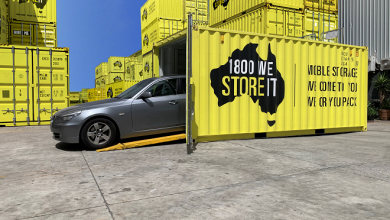Key Elements of A Successful Website Redesign

In today’s digital age, a website serves as the first point of contact between a business and its potential customers. Therefore, it is essential for businesses, whether they offer training, an online shop, live blackjack, or any other services, to have a well-designed website that can engage and convert visitors into customers. However, designing a website that can achieve this goal is not easy. Website redesign is a complex process that requires careful planning, attention to detail, and a focus on user experience. In this article, we will discuss the key elements of a successful website redesign.
1. Clear Goals and Objectives
Before starting a website redesign project, it is important to define clear goals and objectives. What do you want to achieve with your new website? Do you want to increase your online sales, improve your search engine rankings, or create a more engaging user experience? Your goals and objectives should be specific, measurable, achievable, relevant, and time-bound. Defining clear goals and objectives will help you to stay focused and ensure that your website redesign project stays on track.
2. User Experience
User experience (UX) should be the primary focus of any website redesign project. Your website should be designed with the user in mind, making it easy for them to navigate, find information, and take action. This includes using a clean and modern design, creating an intuitive navigation structure, and ensuring that your content is easy to read and understand. A good user experience will keep visitors engaged and increase the likelihood of conversions.
3. Responsive Design
With more and more people accessing the internet from their mobile devices, it is essential to have a website that is optimized for all devices, including smartphones and tablets. A responsive design ensures that your website looks great and functions well, regardless of the device used to access it. This will improve user experience and increase the time visitors spend on your website, as well as reduce bounce rates.
4. Content
Content is one of the most important elements of a website. It is what drives traffic to your website, engages your visitors, and converts them into customers. When redesigning your website, you should focus on creating high-quality, original content that is relevant to your target audience. This includes written content, images, videos, and other multimedia elements. Your content should be optimized for search engines to increase visibility and drive traffic to your website.
5. Search Engine Optimization
Search engine optimization (SEO) is the process of optimizing your website to rank higher in search engine results pages (SERPs). A well-optimized website will attract more traffic, increase visibility, and improve your online reputation. Your website redesign project should include an SEO strategy that includes keyword research, on-page optimization, and link building.
6. Call-to-Actions
A call-to-action (CTA) is a button or link that encourages visitors to take a specific action, such as making a purchase, subscribing to a newsletter, or contacting your business. CTAs should be prominently displayed on your website, and should be clear and concise. Your website redesign should include a strategy for creating effective CTAs that encourage visitors to take action.
7. Analytics and Tracking
Analytics and tracking are essential for measuring the success of your website redesign project. By tracking your website’s performance, you can identify areas that need improvement and make data-driven decisions. Your website should be integrated with analytics tools, such as Google Analytics, that allow you to track important metrics, such as traffic, bounce rates, and conversion rates.
In conclusion, a successful website redesign requires a comprehensive approach that focuses on user experience, responsive design, content, SEO, CTAs, and analytics. By incorporating these key elements into your website redesign project, you can create a website that engages visitors, converts them into customers, and drives business growth.





